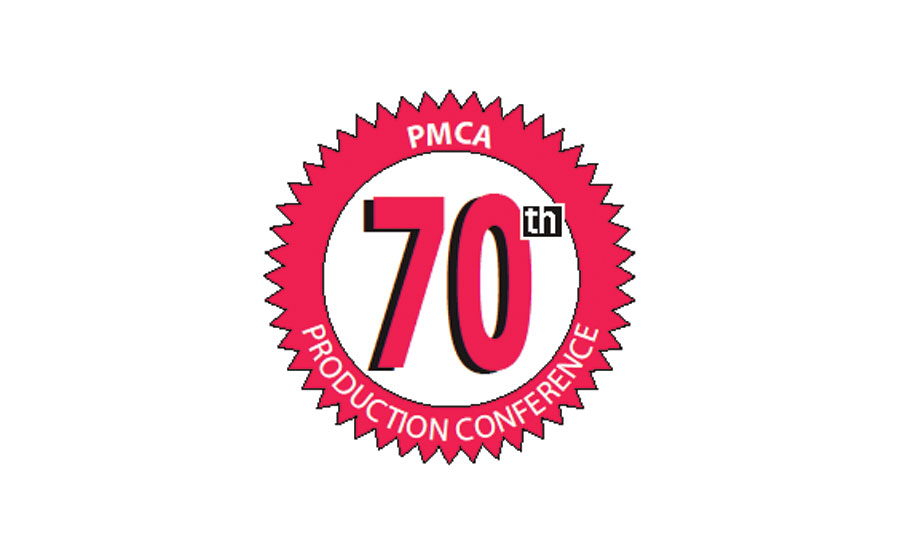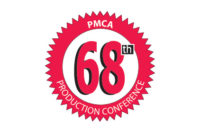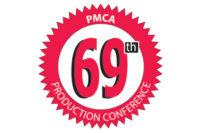PMCA’s 70th Annual Production Conference In Lancaster, Pa., April 11-13 marks its 70th anniversary with a Back to Basics program on sugar and sweeteners as well as an inaugural hands-on chocolate workshop.
Monday Morning, April 11PMCA Student Outreach Committee Update
PMCA’s Student Outreach Committee chair, Mark Freeman, v.p. of sales, Shank’s Extracts, will provide an overview of the activities of the committee, including a review of the growth and success of the program and future outlook. |
Basics and Beyond Seminar The Bulk Sweetener Spectrum: Classic to Contemporary
Session Moderator:Shawn Houser, director of snacks and adjacencies - product development,The Hershey Co. |
Beyond Sugar: Understanding the Role of Sucrose in Confections and What Alternatives are Available
Tate and Lyle’s technical manager, Michelle Schwenk, provides an overview on sugar (sucrose), which is the main ingredient in most confections, and how its properties control the characteristics in different types of confectionery products. Understanding the properties that sucrose contributes to the confection is the first step in understanding what we can do to replace it. New alternatives will be covered, including botanical extracts of sucrose (date sugar, palm sugar, etc.), common sugar replacers (lactose, maltose, etc.) and rare sugars (allulose, ribose, etc.). |
Beyond Corn Syrup – Understanding the Challenges of Other Glucose Syrups
John Ashby, general manager - ingredients, California Natural Products, delves into glucose syrups, particularly those used to provide a natural ingredient label, such as rice and tapioca syrups. Formulation and/or substitution can be complicated, particularly when dextrose equivalency is concerned. Ashley will examine the specific issue of DE specs not being reliable, and what other issues can make the other glucose syrups function so very differently. Ashby even discusses some hyper-super-secret basic principles that are true as we move into the natural, cleaner label, organic categories. |
Addressing Challenging Differences Using More Novel Sweeteners
Pamela Gesford, staff scientist - S&R research, The Hershey Co. discusses the most recent trend of incorporating novel sweeteners to meet the desires of “clean” label consumers as well as capitalizing on the novel flavor/function of these ingredients. Certain inherent characteristics can bring major challenges in certain applications. Examples of these challenges, along with specific candy examples, will be discussed as well as ways to control or overcome some of the most common issues.
|
Tuesday Morning - April 12
Session Moderator:Reg Ohlson, retired Mars Inc. |
Peanuts and Chocolate: The Perfect Pair
Penny Kris-Etherton, professor of nutrition, Nutritional Sciences, The Pennsylvania State University, reveals why peanuts and chocolate work so well together. As a nutrient-dense food high in unsaturated fatty acids, high quality vegetable protein, fiber, vitamins, minerals and other bioactive compounds, peanuts contain many health benefits. Cocoa is a source of a diverse array of bioactive compounds, notably many polyphenolic compounds that also have health benefits. Epidemiologic evidence has shown that peanut consumption decreases risk of all-cause mortality and disease-specific mortality for cancer, cardiovascular disease (CVD), respiratory diseases, diabetes, and neurodegenerative diseases in a dose-dependent manner. Consumption of peanuts and nuts is associated with a lower BMI, as well as decreased age-related weight gain. New research has shown that peanuts benefit endothelial function, which is likely mediated by nitric oxide production (regulated by resveratrol in peanuts). Epidemiologic evidence has demonstrated cardioprotective benefits of cocoa. Consumption of 50 to 100 g of chocolate per week may reduce risk of CVD, and stroke in particular. The main outcomes reported from intervention studies of cocoa consumption are improved endothelial function, decreased LDL oxidation, inhibition of platelet aggregation and decreased levels of F-2 isoprostanes (which is a measure of oxidative stress), all of which benefit cardiovascular health. Collectively, peanuts and cocoa are super foods with numerous remarkable health benefits. |
Making the Move from Synthetic to Natural Colors
This growing consumer preference for using ingredients from recognizable sources has fueled the recent growth in the use of natural colorants. For many, converting from synthetic to non-artificial colors can be difficult due to the differences in stability, flavor off-notes, and achievable shades. This is especially true for confectioners who have never before used natural colors. Michael Jelavich, chemist II, Sensient Technologies, Inc. discusses the commonly seen difficulties, and possible solutions, which confectioners face over an array of confectionery applications when switching from synthetic to natural colors. |
Using Social Media to Strengthen Brands
In less than 10 years, social media has evolved into a full-fledged cultural phenomenon becoming an integral part of modern society. With more and more people actively participating in online communities, consumers are connecting with brands in fundamentally new ways. Recent research indicates social media now plays an increasingly important role in how consumers discover, research and share information about brands and products. As social media marketing becomes an increasingly important part of the marketing mix, brands face the challenge of continuously connecting with current and potential customers in the social space to create discussion, engagement and advocacy. Frank Rosario, Ecommerce & digital marketing, Just Born Inc., discusses how brands can overcome this challenge by better understanding how to leverage social media marketing, implementing an effective organizational structure and providing employees with the proper tools and training to be successful. |
PMCA Research Committee Update
Eric Schmoyer, R&D Project Manager, Barry Callebaut, USA, and the PMCA’s Research Committee chair, provides a review of recently completed grant-in-aid projects and will report on the committee’s plans to enhance the value of this program for the future. |
Drying, Roughing, Puckering: The Role of Astringency in Confections
A PMCA Research Fellowship Project conducted by Erin E. Fleming, Gregory R. Ziegler and John E. Hayes, The Pennsylvania State University, will be presented by Fleming, sensory scientist, Mars Chocolate NA From the velvety mouthfeel experienced when drinking a bold red wine to the rough and drying sensations associated with eating dark chocolate, astringency is a salient attribute in a number of foods and beverages. Defined as the shrinking, drawing or puckering felt on the surfaces of the mouth, astringency contributes to the overall eating and drinking experiences of many products, including chocolate. However, unlike the prototypical tastes — sweet, sour, salty, bitter and umami — the mechanism through which oral astringency is elicited is poorly understood. This presentation will explore the impact on overall acceptance of astringent foods.
|
Tuesday Afternoon - April 12Session Moderator:Peggy Fyffe, associate director trade stewardship, Almond Board of California |
Regulatory Update for the Confectionery Industry 2016
Laura Shumow, senior director of scientific and regulatory affairs, National Confectioners Association, dissects the latest federal and local regulatory and policy developments impacting the confectionery industry. The final rules implementing the Food Safety Modernization Act will begin to go into effect starting September 2016. Also, the final rules updating the NFP are anticipated to publish in spring 2016. Increased media attention on sugars and health may lead to new efforts to establish policies focused on reducing the consumption of added sugars, while ingredient safety and food safety concerns remain a priority at FDA this year. Additionally, we are seeing ongoing action on GE/GMO labeling, allergen labeling, Prop 65 lawsuits targeting the candy industry and more. |
FSMA and the Impact on Medium Size Companies
With the FDA publishing updates on the Food Safety Modernization Act (FSMA), questions arise about what needs to be done different from the conventional Food Safety/Security systems to comply with what is being required by the government. Antonio Malaquias, director of food safety and quality, DeMet’s Candy Co., provides some clarity about the regulation, defining in what areas the mid-sized food companies will be impacted. He will also recommend some actions and where to find inexpensive resources to start the compliance process. |
Food Transparency and the SmartLabel Journey
SmartLabel is a new industry-wide digital solution announced in December 2015 to put detailed product information right at consumers’ fingertips. By scanning a code on the package or conducting an online search, shoppers reach a landing page with information on ingredients, nutrition, allergens, third-party certifications and many other attributes of a wide range of food, beverage, pet care, household and personal care products. Deb Arcoleo, director, product transparency, The Hershey Co., lifts the lid on how SmartLabel was developed, how it works, and the plans and timing for industry-wide adoption. It will also cover insights and data from two consumer research studies on transparency completed in 2015.
|
Keynote Address - Tuesday Evening, April 12Project Peanut Butter: How Enterprise and Innovation have offered Hope to Millions of Malnourished Children Worldwide
Dr. Mark Manary Helene Roberson, professor of pediatrics at Washington University and the director of Project Peanut Butter, tells the story of ready-to-use therapeutic food (RUTF) and childhood malnutrition. RUTF is a mixture of peanut butter, sugar, milk powder and vegetable oil that is currently the World Health Organization’s standard of care worldwide to treat malnutrition. RUTF tastes like a confectionery product! RUTF was first a medical research intervention that dramatically improved recovery rates for children with severe malnutrition in sub-Saharan Africa. After developing this food and conducting this research, Dr. Manary endeavored to make RUTF available worldwide, and started a not-for-profit to do so called Project Peanut Butter. The production and operational phase of the work presented its own challenges and opportunities, which Dr. Manary will also share during his presentation.
|
Wednesday Morning - April 13
Session Moderator:Steven Genzoli, v.p. - quality qssurance/research and development, Ghirardelli Chocolate |
PMCA Education and Learning Committee Update
PMCA’s Education and Learning Committee chair, Peter Jamieson, lead food scientist, Atlas Point Technical Services, will provide a report on the association’s short course program including highlights of recent courses and a look at future offerings. |
How to Select the Perfect Chocolate
Selection criteria for chocolate are numerous and can be confusing. Patrick J. Huffman, Blommer Chocolate Co., looks to provide assistance to product developers as they utilize chocolate and chocolate analogs in their formulations. The right chocolate ingredient will meet the consumer’s interest and pocketbook, while also meeting the complex needs of development, supply chain, finance, and marketing in today’s complex and competitive CPG marketplace. Understanding the variables in the manufacture of chocolate and their impact on the finished product will guide the user to the right material. |
Up Close and Personal with Chocolate: All Chocolate, Hands-On WorkshopAttendees will have the opportunity to “roll up their sleeves” and rotate through interactive stations featuring live demos and tasting samples. |
Cocoa Bean Origin StationLed by Craig Rank, Craig N Rank, Confectionery Consultant, LLC, Tim McCoy, World Cocoa Foundation, Virginia Sopyla, World Cocoa Foundation and Rose Potts, Blommer Chocolate Co. Attendees can explore the mystery of the cocoa bean — why there is such a variety of flavor profiles and how this odd-looking seed becomes such a delectable treat. A selection of pods, beans and origin liquors will be available for touching and tasting. |
Chocolate Processing StationLed by Marlene Stauffer, Blommer Chocolate Co., Abdoulaye Traore, Mars NA and Carly Meck, Blommer Chocolate Co. A lot goes into transforming cocoa beans into something useful: cleaning, roasting, cracking, winnowing, cooling, separating, refining, conching, tempering! And not only that, the resulting product must meet the standard for white, milk and dark varieties. Videos, posters and samples will provide a look at this complex process from raw ingredients to finished product. |
Chocolate Tempering StationLed by Joe Sofia, Cargill Cocoa & Chocolate, and Randy Hofberger, R&D Candy Consultants There are many reasons to temper chocolate just right for our application including texture, flavor, appearance and shelf life. Slab and unit tempering will be explained along with a discussion on troubleshooting. |
Enrobing StationLed by Frank McCafferty, The Hershey Co., Terry Gross, The Warrell Corp. and Steve Marcanello, retired, Asher’s Chocolates Enrobing is like placing special clothes on chocolate - gently guiding centers through a smooth chocolate waterfall. If done right enrobing makes chocolate centers more attractive. However, poor bottoms, exposed centers and air bubbles can cause the product to sink! Attendees will have the opportunity to learn some basic enrobing techniques from an industry expert and dress up some centers themselves on a mini-enrober. |
Moulding StationLed by Ann Brinkerhoff, The Hershey Co., and Peter Greweling, Culinary Institute of America This station will feature information on selecting and using moulds, chocolate best suited for moulding, general procedures and troubleshooting. Attendees will have the opportunity to mould their own bar of chocolate right at the conference and decide to eat it on site or take it home to share. |
Ganache, Truffles and Shell Moulding StationLed by Chef Richard Cusisk and Peggy Fyffe, Almond Board of California Oh, the variety and deliciousness of these beautiful treats! With a range of indulgent ingredients and creativity the possibilities are endless. But understanding the intricacies of ingredient formulation and function and perfecting technique is so important to building a great product. Attendees will see a great chef in action as he demonstrates his own techniques for creating these great indulgences. Great tasting samples! |





